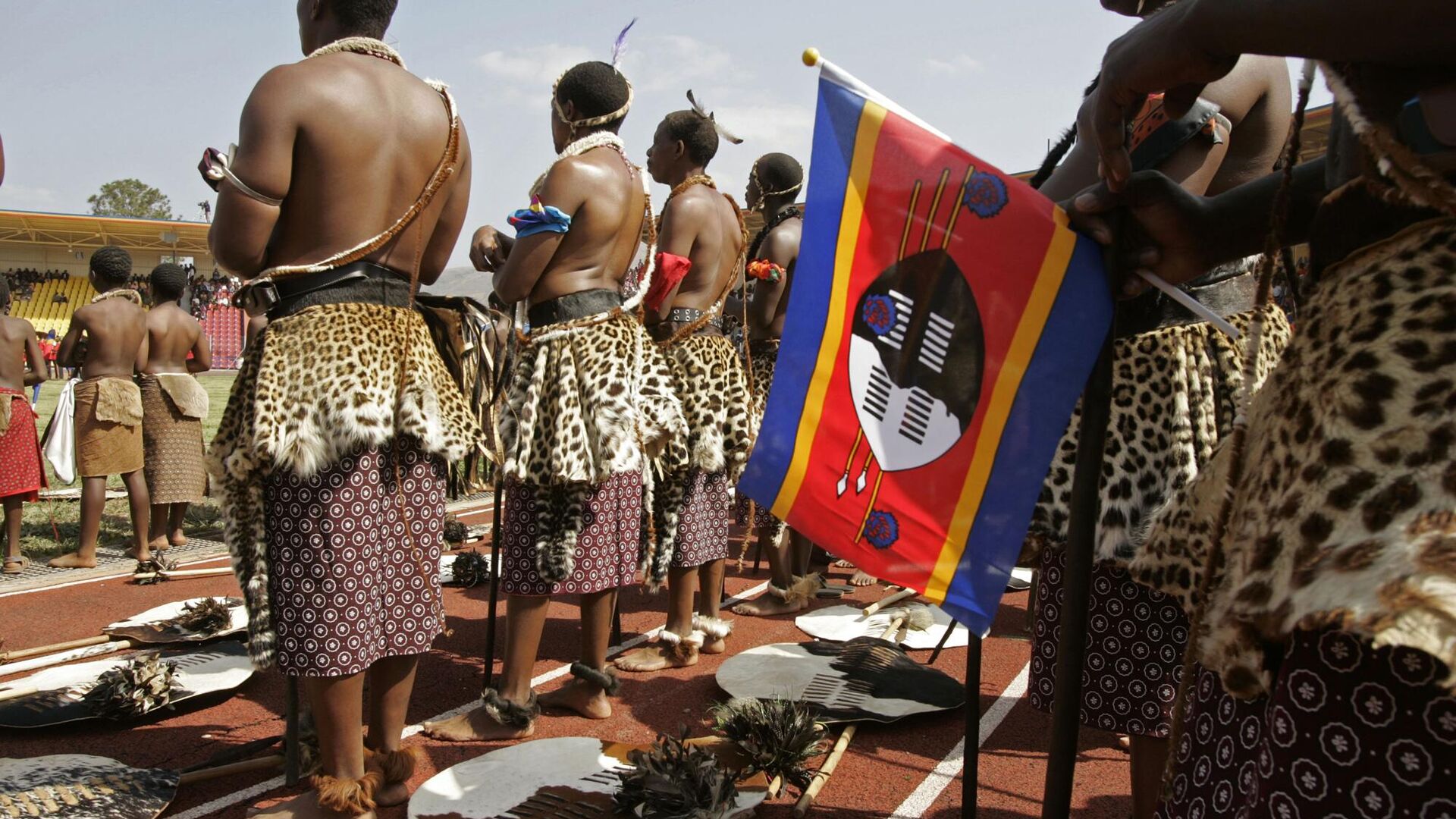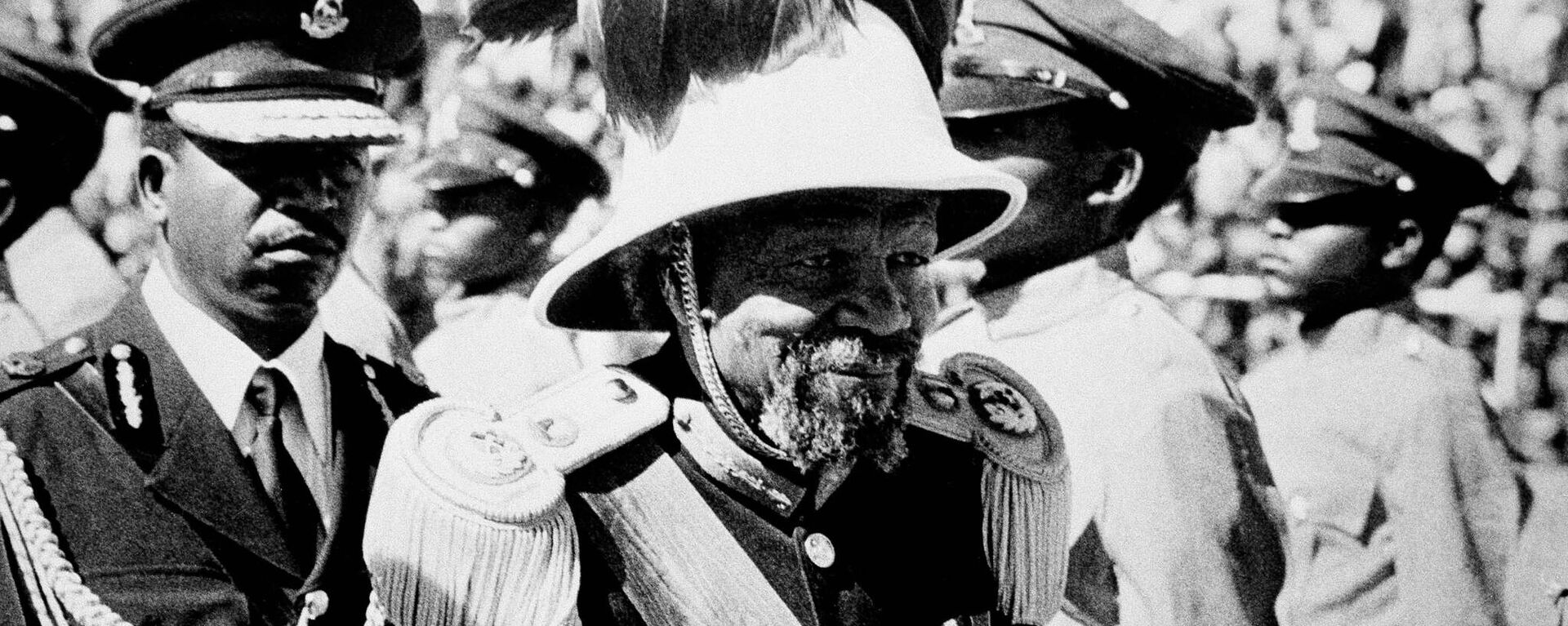https://en.sputniknews.africa/20230906/day-of-wonder-eswatini-celebrates-independence-day-1061924248.html
Day of Wonder: Eswatini Celebrates Independence Day
Day of Wonder: Eswatini Celebrates Independence Day
Sputnik Africa
On September 6, the Eswatini (formerly Swaziland) people come together to celebrate Independence Day, or Somhlolo Day as they call it in honor of the nation's... 06.09.2023, Sputnik Africa
2023-09-06T18:04+0200
2023-09-06T18:04+0200
2023-09-06T18:17+0200
sub-saharan africa
eswatini (swaziland)
national holiday
king mswati iii
misuzulu zulu
united kingdom (uk)
british empire
british colonialism
colonialism
independence
https://cdn1.img.sputniknews.africa/img/07e7/09/06/1061926167_0:104:2000:1229_1920x0_80_0_0_8dd631ffdd7d26f5eaa653fb32699470.jpg
Eswatini Independence Day is a national holiday observed annually to commemorate its independence from the UK in 1968. The history of the second smallest country in continental Africa at the moment dates back to 1836, when King Somhlolo defeated Zulu tribes and introduced a centralized system of his power, subordinating other chiefs, and effectively created the Swazi state.However, in 1894, the country could not escape the invasive aspirations of the colonizers and fell under the protectorate of the neighboring Boer Republic of Transvaal. After the Anglo-Boer War, which took place in 1899-1902, the victorious British Empire declared Swaziland its protectorate, preserving the power of local kings and chiefs.Under the protectorate, Swaziland approached self-government and independence in an evolutionary way. In the same year, King Sobhuza II became head of the Swazi. After World War II, Sobhuza, with the support of traditional Swazi leaders, created the Imbokodwo National Movement, which defended the traditional Swazi way of life.The drive for independence gathered momentum in 1964 with the adoption of Swaziland's first constitution. This was followed in 1967 by a new constitution providing for self-government after independence.Finally, on September 6, 1968, Swaziland gained independence from the United Kingdom. The nation was originally a constitutional monarchy, but in 1973 King Sobhuza II assumed full power.Celebrations TodayThe people of Eswatini have a double occasion to celebrate on Wednesday, as along with the 55th Independence Day, the 55th birthday of King Mswati III is also being observed.Along with the performances in the streets all day long, most of the people gather at the Somhlolo National Stadium in Lobamba. It was in the stadium that the people felt as one and enjoy a concert that includes both traditional Swazi songs and modern repertoire, and the sounds of drums and flutes were danced to by both the young and the old.The public art was preceded by a lengthy military parade, with participants greeting King Mswati III and Prime Minister Cleopas Sipho Dlamini while walking on the artificial turf of the field.This year's celebration was attended by Taiwan President Tsai Ing-wen, in whose honor Swazilanders performed a traditional Chinese dance at the stadium. The local media added that former South African President Jacob Zuma and ex-Botswana President Ian Khama likewise attended the celebrations.
https://en.sputniknews.africa/20230722/father-of-independence--and-of-210-children-swazi-king-sobhuza-iis-124th-birthday-1060696242.html
eswatini (swaziland)
united kingdom (uk)
british empire
southern africa
Sputnik Africa
feedback@sputniknews.com
+74956456601
MIA „Rossiya Segodnya“
2023
Maxim Grishenkin
https://cdn1.img.sputniknews.africa/img/07e7/0a/17/1063018107_0:0:1104:1103_100x100_80_0_0_03090c85a11f5d2e8a19cf1d989443c9.jpg
Maxim Grishenkin
https://cdn1.img.sputniknews.africa/img/07e7/0a/17/1063018107_0:0:1104:1103_100x100_80_0_0_03090c85a11f5d2e8a19cf1d989443c9.jpg
News
en_EN
Sputnik Africa
feedback@sputniknews.com
+74956456601
MIA „Rossiya Segodnya“
Sputnik Africa
feedback@sputniknews.com
+74956456601
MIA „Rossiya Segodnya“
Maxim Grishenkin
https://cdn1.img.sputniknews.africa/img/07e7/0a/17/1063018107_0:0:1104:1103_100x100_80_0_0_03090c85a11f5d2e8a19cf1d989443c9.jpg
eswatini (swaziland), national holiday, king mswati iii, misuzulu zulu, united kingdom (uk), british empire, british colonialism, colonialism, independence, southern africa, jacob zuma
eswatini (swaziland), national holiday, king mswati iii, misuzulu zulu, united kingdom (uk), british empire, british colonialism, colonialism, independence, southern africa, jacob zuma
Day of Wonder: Eswatini Celebrates Independence Day
18:04 06.09.2023 (Updated: 18:17 06.09.2023) On September 6, the Eswatini (formerly Swaziland) people come together to celebrate Independence Day, or Somhlolo Day as they call it in honor of the nation's founder King Sobhuza I who ruled between 1805 and 1839 and was nicknamed "Somhlolo," meaning "Wonder" in the Swazi language.
Eswatini Independence Day is a national holiday observed annually to commemorate its independence from the UK in 1968.
The history of the second smallest country in continental Africa at the moment dates back to 1836, when King Somhlolo defeated Zulu tribes and introduced a centralized system of his power, subordinating other chiefs, and effectively created the Swazi state.
The next Swazi king, Mswati I, annexed new lands in the north of the country in the late 1830s and created a state with more than twice the area of present-day Eswatini.
However, in 1894, the country could not escape the invasive aspirations of the colonizers and fell under the protectorate of the neighboring
Boer Republic of Transvaal.
After the Anglo-Boer War, which took place in 1899-1902, the victorious British Empire declared Swaziland its protectorate, preserving the power of local kings and chiefs.
Under the protectorate, Swaziland approached self-government and independence in an evolutionary way.
In 1921, Swaziland's first legislature was established. It consisted of elected white representatives whose task was to advise the British Resident Commissioner on non-Swazi matters.
In the same year, King Sobhuza II
became head of the Swazi. After World War II, Sobhuza, with the support of traditional Swazi leaders, created the Imbokodwo National Movement, which defended the traditional Swazi way of life.
The drive for independence gathered momentum in 1964 with the adoption of Swaziland's first constitution. This was followed in 1967 by a new constitution providing for self-government after independence.
Finally, on
September 6, 1968, Swaziland
gained independence from the United Kingdom. The nation was originally a constitutional monarchy, but in 1973 King Sobhuza II assumed full power.
The people of Eswatini have a double occasion to celebrate on Wednesday, as along with the 55th Independence Day, the 55th birthday of King Mswati III is also being observed.
Along with
the performances in the streets all day long, most of the people gather at the Somhlolo National Stadium in Lobamba.
It was in the stadium that the people felt as one and enjoy a concert that includes both traditional Swazi songs and modern repertoire, and the sounds of drums and flutes were danced to by both the young and the old.
At the stadium, schoolchildren also recite their own poems in Swazi and are invariably applauded by the boisterous crowd.
The public art was preceded by a lengthy military parade, with participants greeting King Mswati III and Prime Minister Cleopas Sipho Dlamini while walking on the artificial turf of the field.
This year's celebration
was attended by Taiwan President Tsai Ing-wen, in whose honor Swazilanders performed a traditional Chinese dance at the stadium. The local media added that former South African President Jacob Zuma and ex-Botswana President Ian Khama likewise attended the celebrations.



